How have Todd Hido and Hiroshi Sugimoto used the medium of photography to record and present the intangible?
‘A photograph might be a fixed image but, socially speaking, photography does not keep still.’ David Campany, The Photographic (2004)
A Photograph Is Intangible
A photographs takes a fleeting moment – the natural atmosphere and emotion – and immortalises it in a still frame. Once taken, that moment can no longer be revisited: it is intangible. Intangibility is the absence of a physical body. While a print out can be held and felt, the subject of the image is now immaterial – a copy of a memory. Take for instance a tourist. He may photograph himself in front of a landmark as “indisputable evidence that the trip was made” (Sontag 1977:9). But once he moves to the next location he cannot return to that same spot, the moment has passed. It does not exist any longer outside the frame. All the same people will exist, the same landmark stands however the exact makeup of that image is only present within the bounds of the frame. “The shutter clicks and the clock jumps to the past” (Stahel 2003:7). Similarly Susan Sontag draws parallels between the shadows in Plato’s Cave and the photograph. The shadows are a believed truth based on bodiless projection used to show the deceptive nature of our own perception. Both these shadows and photographs mislead the viewer into believing they know the ‘full picture’. What’s seen is believed as fact. “The picture may distort; but there is always a presumption that something exists, or did exist” (Sontag 1977:5). On the contrary, a photograph is a physical representation of what did happen, tangible evidence. Photographs are “fixed traces of the light” (Stahel 2003:7). You can hold it, share it and even fix it in a book. Photographs are the physical body of a memory. “any single statement about photography is likely to fail on some level.” (Campany 2004:10). Like anything physical, a photograph has dimensions. A photograph cannot be fully explained in one sentence, they connect emotionally to the viewer. Between even just two people, a photograph’s summary can vary drastically as throughout a photograph’s timeline it will pass through many different hands and the view of many eyes, a result of a physical form. “photography does not keep still” (Campany 2004:7). Unlike a paintings which is someone’s artistic interpretation, a photograph has a high degree of indexicality. It cannot lie or purposefully mislead, it shows what was captured, it is a tool.
Photographing the Intangible
How do you photograph something that doesn’t exist? There is a common consensus that the camera in one way or another killed the paranormal. If something exists there’s a picture so if you haven’t seen it, then it mustn’t exist. Tales of beasts in the woods and monsters in marshes have become increasingly difficult to believe without evidence. For early photographers like William Hope and William Mumler this was a matter of manipulation: using simple double exposure techniques to create ghastly effects. While its impossible to photograph the ghost of a loved one, printing a copy of them achieves a similar effect. Photographer Todd Hido captures feelings of isolation by alluding to humanity without ever showing it. The loneliness of his images utilises familiar imagery to trigger a personal response. Hiroshi Sugimoto turns something familiar into something unrecognisable through distortive blurs. “any single statement about photography is likely to fail on some level” (Campany 2004:10). This is because a photograph on its own has no context. It is an abstraction. Without context any interpretation is valid. In a collection, a narrative can be crafted however the ambiguity is what makes images resonate with the viewer. Any feelings associated with an image are entirely disembodied. “Photographs actively promote nostalgia.” (Sontag 1977:15). If a photograph represents a passed moment of time and nostalgia is the universal longing for the past then photography is the act of presenting nostalgia, intentionally or not. This is most easily seen with family photobooks but any photograph will elicit some level of nostalgia at some point in its timeline.
Surrealism and the Uncanny
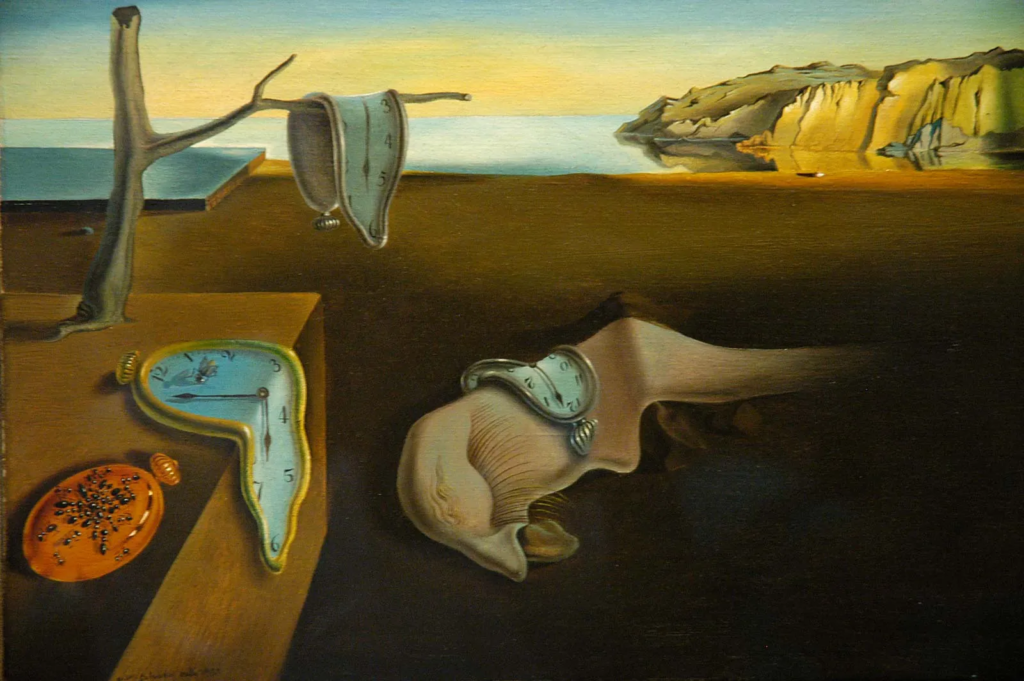
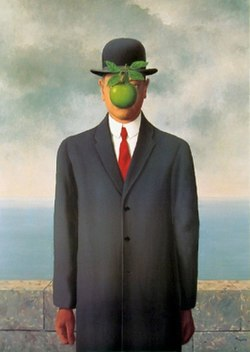
Surrealism as a concept was named by French poet Guillaume Apollinaire in his play ‘The Breasts of Tiresias’ (1917) where the term meant simply ‘beyond reality’. Surrealism built off of pre-existing art movement such as Automatism: the idea that unconscious behaviours that subject is unaware of as well as Dadaism: art that rejected conventional norms in favour of the absurd. It wasn’t until the First World War had cleared that Surrealism as a movement gained its own footing with poet André Bretons ‘Manifesto of Surrealism’ released in 1924. Following the atrocities of war, the general public questioned beliefs that blindly led them into the atrocities of war and choose to look inwards at themselves, rejecting Formalism: where images are based not on emotion but instead technical elements, and Rationalism: the belief that reason is the most important factor of knowledge, and practice healing methods such as self-examination and psychoanalysis based on works from Sigmund Freud and Carl Jung. Surrealism is the inwards looking movement meant to “revolutionise human experience.” (Tate Modern: 2). A surreal painting combined irrational, unseen aspects with totally rational and familiar imagery to create an end product that could be called hallucinatory or even uncanny. A famous example would be Salvador Dalí’s: ‘The Persistence of Memory’ (1931). This painting used a beach as the background for an a still-life arrangement of objects to sit in front of. The most notable of these objects are the clocks, a mundane object turned surreal by melting and distorting them. Its not just the clocks that are manipulated and changed however: the background is broken up into nonsensical boxes and a tree is growing out of a wooden surface. All these inconsistencies create the appearance of something that could only exist somewhere illogical such as the subconscious. René Magritte’s ‘The Son of Man’ (1964) is a seemingly normal portrait, something familiar and unassuming except for the floating green apple obscuring the face. By obscuring and manipulating something familiar such as the face into something new and foreign with an apple creates a sense of wonder and mystery in the viewer.
The uncanny was coined by neurologist and founder of psychoanalysis, Sigmund Freud. Psychoanalysis is the theory that personality is dependant on our past. Similarly the uncanny was the idea that childhood fears still cast immense fear over the adult mind, a reaction dependant on our past. If a grown adult saw a shadowed figure at the end of their bed the dread experienced would be called uncanny had they been fearful of tales such as the sandman as a child, while it is a reaction of fear, it is also a reaction of recognising some repressed familiarity. The word is now used to simply describe something uncomfortably recognisable and wrong at the same time, an unsettling juxtaposition that does not sit easy with viewers. Take a smiley doodle: the brain will associate it via eye and mouth placement as a face. When looking at a car the same might happen: the brain will see two shapes resembling eyes and something that might enough look like a face to decide that the car its watching you. When faced with a portrait, the brain will tell you that it is a person. If you then manipulated each feature enough that the portrait could no longer be of a real person, the brain will see the overall features and recognise it as a face. At a quick glance you may be fooled however something about it wont be quite right. When facing a doppelganger you will recognise the face as yours, however the nose may be too small to be correct, it would be described as uncanny. The uncanny leaves the feeling of unease and discomfort.
Todd Hido
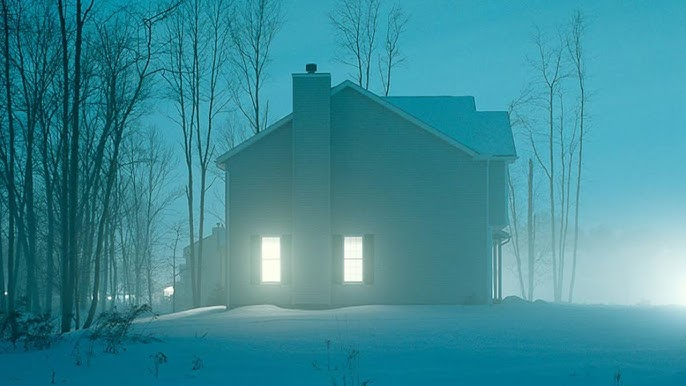
Todd Hido creates photographs that could be described as both traditional and bordering uncanny at the same time. Despite the perceived simplicity of these photographs, they expertly embody feelings of realism and discomfort “as though they have been directly pulled from the recesses of your own memory”. (Kraft, 2021: 2) By taking a shared experience or memory and presenting them back to the viewer, the photograph will have created a personal connection on the basis of familiarity, in turn eliciting a stronger emotional connection. These shared memories however are twisted. He takes ordinary houses and transforms them into haunting dreams through soft lighting and quiet composition. This familiarity is required to create feelings of the uncanny, something only achievable by taking the familiar and changing it into something feared- in this case total isolation. House hunting creates a lonely narrative of being stuck as an observer on the cusp of society. While you can see houses and know someone must be present, you don’t see a single person. They’re hiding, from you. The viewers eye is made out to be that uncomfortable felt-presence, someone uninvited watching from somewhere just out of view. Its an uncomfortable yet strangely peaceful atmosphere that extends throughout this body of this project. Additionally this photograph has a muted colour pallet. The whole image is a cool blue toned with only white light and dark trees breaking this monotone pattern. The bleak colour pallet doesn’t elicit any exiting or extravagant reactions; it showcases the dullness of the mundane, a universally relatable topic that will reach a further audience than an American suburb.
Hiroshi Sugimoto
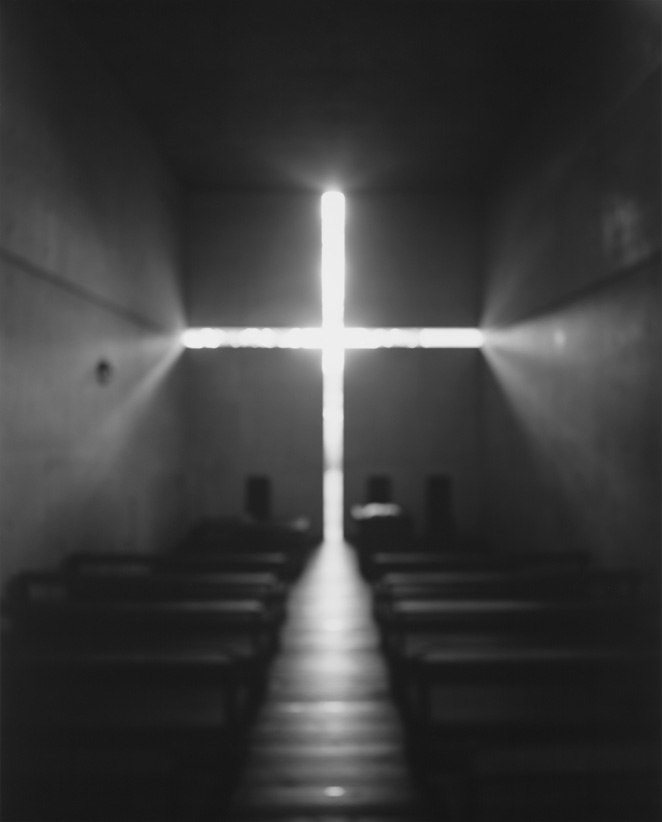
Hiroshi Sugimoto creates photographs that “dissolves the lines between time, memory, and history” (Fraennkel Exhibition: 1) in his photographs. By creating images that seemingly stand outside the passing of time, they hold a strange sense of power over the reader and create an imposing atmosphere, an important feeling when photographing powerful buildings. This makes the presence of the buildings seem as large as they would physically be in person. In this image, Hiroshi Sugimoto has photographed a church. Churches were and still are, though to a lesser extent, powerful so the imposing atmosphere and emphasised cross shows power over the viewer. Although this image of a minimalist church could easily be associated with current aesthetics and movements, it could just as easily be taken from many points of your own memory and therefore history. Minimalism dependent on the present, its been present throughout modern history. The protestant church has been white and void of decoration to separate itself from Catholicism since its foundation in 1517. The lit cross looks angelic with bright glowing white but also inviting, like a welcoming hand which is representative of both the welcoming and openness of community but also the personal connection people build with their religion. At the same time the emptiness of the frame, the bareness of the room as well as the coldness the loneliness that comes with religious teaching and practices creating a cold and out of reach image. even if you wanted to reach out, it looks so large and far away, making the viewer feel unworthy and small. Additionally the image was purposefully made blurred which creates a dazy and unreal appearance. Like something from right out of your memories.
Conclusion
In conclusion, both Todd Hido and Hiroshi Sugimoto have created photographs that capture something seemingly right out of your own memories void of human presence. They have presented the intangible as an intimate emotional response through the use of familiar while also lonely imagery. Todd Hido’s images elicit feelings of nostalgia and loneliness while Hiroshi Sugimoto’s are powerful and intimidating. In response to Hiroshi Sugimoto I produced a number of images inspired by ‘in praise of shadows’ which I believe captures similar feelings of wonder and fear as ‘architecture’. These images create unique and striking shapes from a flame which has associations of danger. While my image didn’t create the same elongated streak, I think the humanoid shape creates an uncanny feeling instead which achieves a similar feeling of unease. As a response to Todd Hido’s ‘House Hunting’ I created a series of images documenting my walk around neighbourhoods at night. I didn’t manage to photograph in heavy fog or mist but I made sure each one showed signs of isolation regardless of the missing mystery of fog.



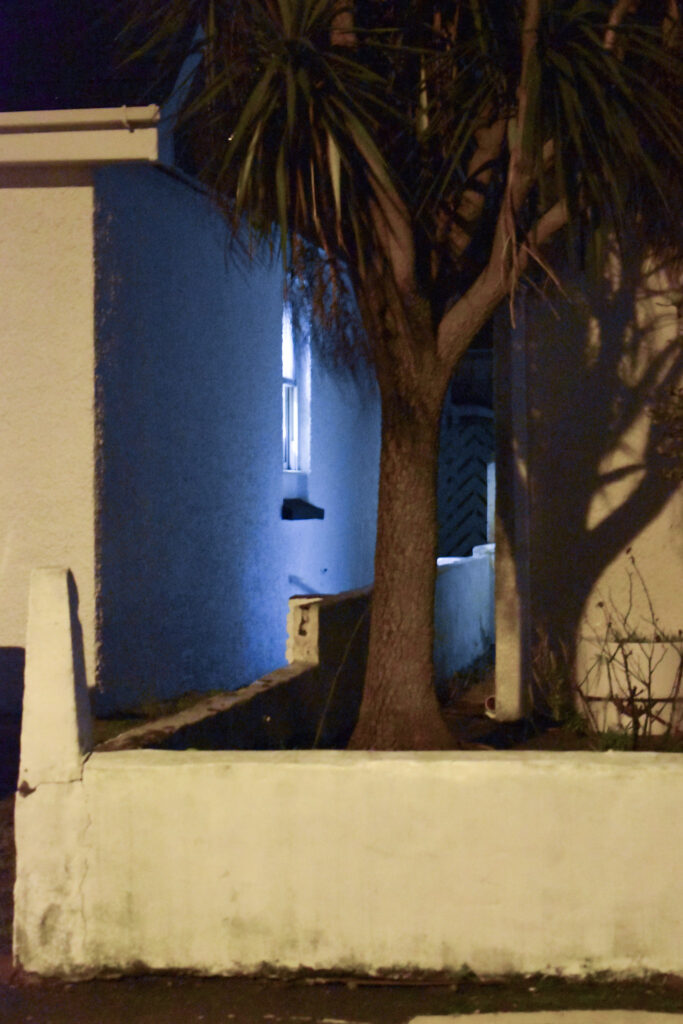
Bibliography
Campany, D. (2004) ‘Thinking and not thinking photography’. Engage 14 (Winter) The Photographic: 7:12. London.
Fraennkel Exhibition, ‘Hiroshi Sugimoto: Architecture‘ [Online] Last accessed 28 January 2025: https://fraenkelgallery.com/exhibitions/hiroshi-sugimoto-architecture-2.
Kraft, C. (2021), ‘Todd Hido On “Homes at Night” and Illustrating Memories in Photography‘ [Online] Last accessed 27 January 2025: Todd Hido On “Homes at Night” and Illustrating Memories in Photography – Interview by Coralie Kraft | LensCulture.
Sontag, S. (1977) ‘In Plato’s cave’ in On Photography. London: Penguin Books.
Stahel, U. (2003) ‘This is Photography!’ in Well, What is Photography?. Switzerland; Fotomuseum Winterthur.
Tate Modern, ‘Surrealism‘ [Online] Last accessed 29 January 2025: https://www.tate.org.uk/art/art-terms/s/surrealism.

Bronwen, I’ve made some minor spelling corrections and typos – make sure you update essay in book layout. Apart from that it’s complete. Well done!